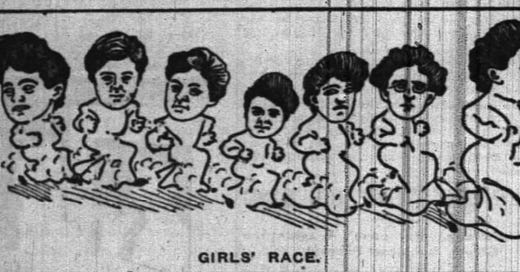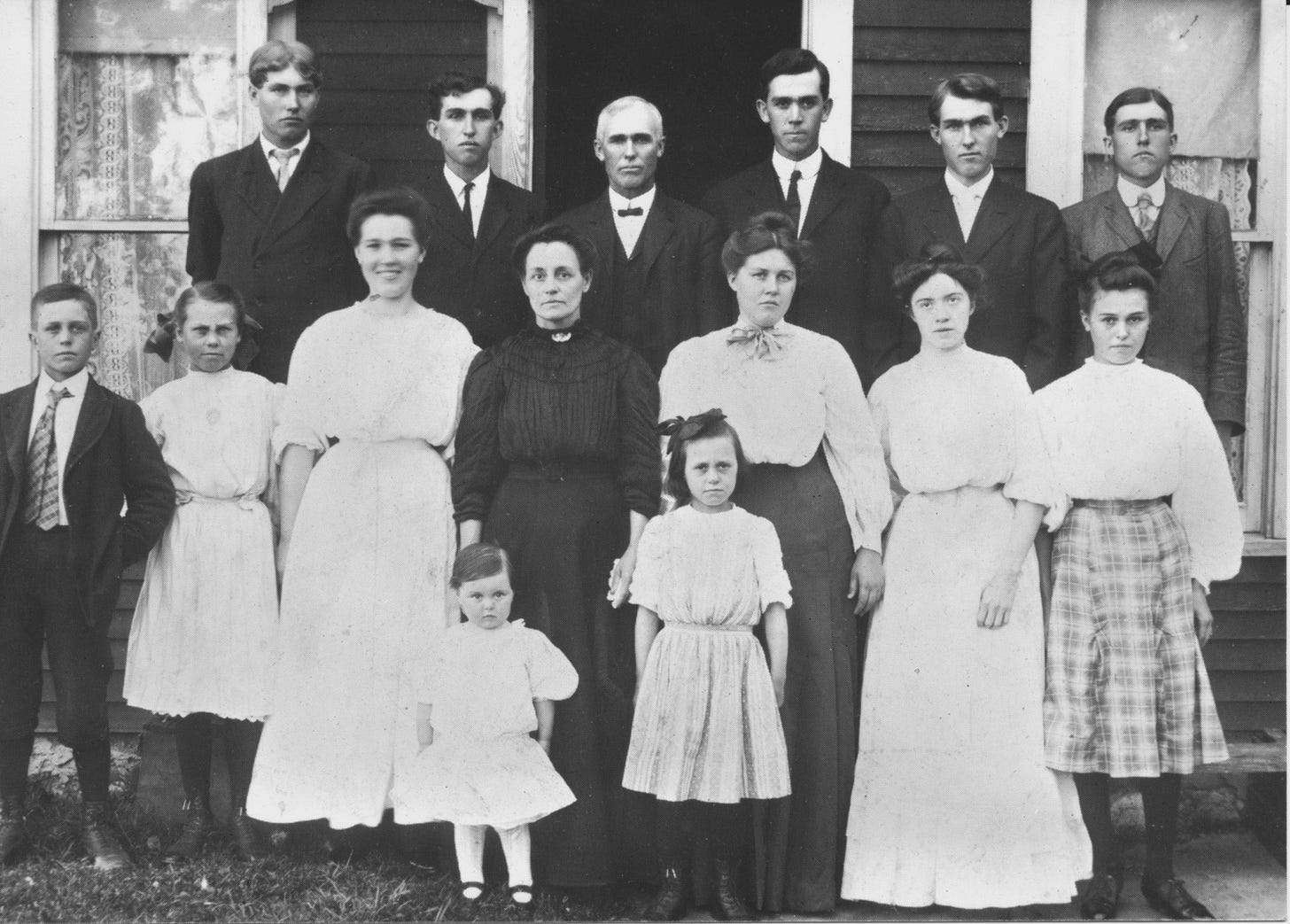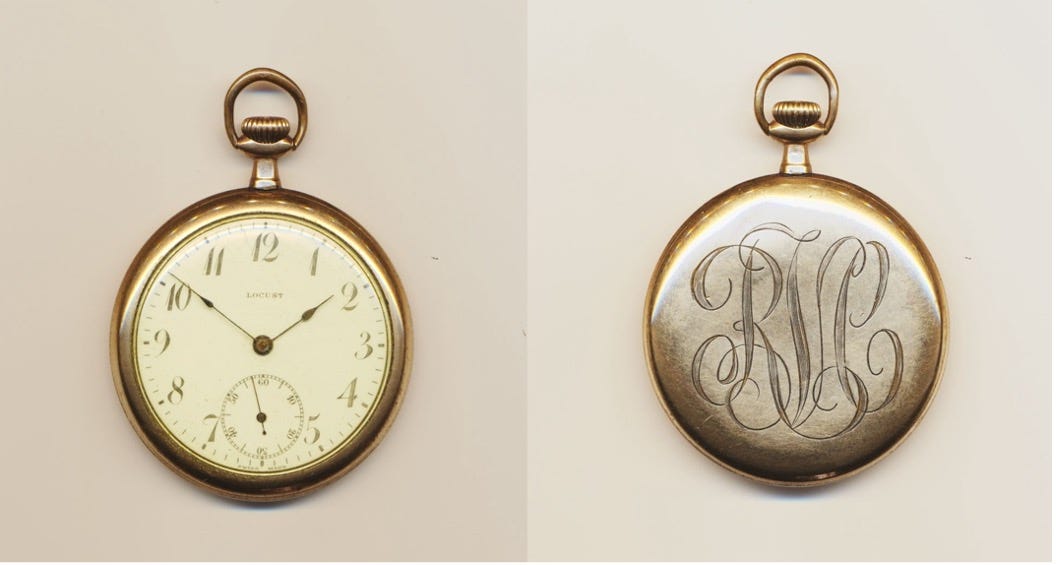Henry Vaneman Lincoln Cory (1860-1912) had two wives...consecutively, not simultaneously. Lincoln, as he was known, married the first time to his first cousin, Celestine Pauline “Sella” Cory. Lincoln was the son of Robert V. “Lucky Bob” Cory (Jeremiah7, Elnathan6, Ebenezer5, Elnathan4, John3,2,1), the subject of previous posts in Cory Stories, and Sella was the daughter of Bob’s brother Abijah Curtis “Curt” Cory. Bob’s farm straddled the Elkhart-Kosciusko County line in northern Indiana, and Abijah’s farm abutted Bob’s on the south. Even though first-cousin marriages weren’t outlawed in Indiana at the time,[1] and Lincoln and Sella were both of legal age to marry without parental consent, they chose to get married over the state line at Sturgis, St. Joseph County, Michigan 20 January 1882. The first of their six children, Robert Van, known to all by his middle name, was born 13 October 1882.
Van graduated from Syracuse High School in 1900.[2] He took a teaching job at South Bend Commercial College after completing a course of study there. During Van’s time teaching at SBCC, Geneva Carr, who would later become Van’s wife, enrolled at the school in 1904.[3] Subsequently, Van took a job at Andrews University, a Seventh Day Adventist School in Berrien Springs, Michigan, for a year (probably the 1906-1907 school year).[4] After graduating from SBCC, Geneva worked at Mishawaka Woolen Manufacturing. At a company picnic on 30 Jun 1906, she ran in the “tall girls race.” (Fig. 1),[5] even though she doesn’t look very tall in a family portrait of the Lincoln Cory family, probably taken the following year (Fig. 2).
Fig. 1. The Mishawaka Woolen Mfg. picnic in 1906 featured separate races for tall and short girls. Which race is depicted here is unknown. Illustration from The South Bend Tribune, 30 June 1906 (note 5).
Fig. 2 In a family portrait taken ca. 1907, Van Cory is second from the right in the back row, next to his brother Lee, who is at the end of the row. Van’s wife Geneva is standing in front of Van.
Van and Geneva were married on Christmas Eve, 1906.[6]
Apparently, his time at Andrews University convinced Van to become a Seventh Day Adventist, and he took a job at another Adventist college, the Southern Training School in Graysville, Tennessee, for the 1907-1908 school year.[7] Van was listed on the faculty of the commercial department as late as the 1911-12 school year[8] Unfortunately, Van and Geneva moved to Tennessee during an epidemic in the southern U.S. that is little-known today. Pellagra is a multisystem disease manifested by, among other things, the three Ds--dermatitis, diarrhea, and dementia. The disease had been known in Europe since its was first described in Spain in 1735. The first case of pellagra reported in the United States was in 1902 in a Georgia farmer, though it probably existed in the U.S. before that.[9] The disease was increasingly recognized over time. Records for the years 1907-11 show 15,780 cases, with a mortality rate of 39.1 percent, for eight southern states. It is estimated that while the epidemic ran its course over several decades, it caused over three million cases and 100,000 deaths occurred in the U.S. Research in the 1910s and 1920s showed that pellagra could be treated and prevented with diet, and in the 1930s, the “pellagra preventative” factor was found to be niacin (vitamin B3). The 3-M diet—meat, (corn)meal, and molasses—common in poor rural areas and institutions such as mental hospitals and orphanages in the south—was lacking in niacin, which was lost in the process of milling corn into meal.
Van Cory took ill in November 1912 with what was thought to be appendicitis, but “was too weak to submit to an operation.” His condition improved “after a week or ten days of suffering.” His obituary indicates that by the time he died on 3 December 1912, he had “contracted the disease of Palegera,” but given the natural history of the disease, he must have been developing niacin deficiency for months or years before his death. The abdominal pain he had experienced could have been a symptom of the disease, which can cause inflammation of the lining of the gastrointestinal tract and abdominal pain. Indeed, the obituary notes that when he was diagnosed with appendicitis, “from the first his case was doubtful.” Seventh Day Adventists follow a vegetarian diet, which, when well-balanced, isn’t typically associated with niacin deficiency. However, excluding meats rich in niacin, such as beef and chicken liver, tuna, turkey, chicken breast, and pork from the diet, combined with the southern penchant for cornmeal and molasses, could have contributed to Van’s illness. The fortification of flour and flour products with B vitamins, including niacin, beginning in the 1940s played a major role in ending the pellagra epidemic in the U.S.
My grandfather Lee was with his brother during the last week of his life, and stayed in touch with his widow afterward. On 13 March 1913 Geneva sent a postcard from Graysville to Lee. In her message, she wrote, “Spring is here with all her fresh beauties but it is so very lonely I cannot enjoy it at all. In fact, every day it seems harder to bear.”[10] Geneva remained a widow until 1936. Her second marriage ended in divorce in 1953, and she died in 1957.
I have a pocket watch (Fig. 3) which was in the possession of Van’s brother Lee until his death in 1980. The watch is engraved with the monogram RVC, which narrows down the potential owners to Lee’s brother and his grandfather, who were both named Robert V. Cory.
Fig. 3. Locust pocket watch manufactured in Switzerland, engraved with the monogram RVC. A similar engraved model of the Locust watch can be found in the 1918 catalog for Hipp. Didisheim & Bro.
The watch is labeled “Locust,” a Swiss brand which was sold by Hipp. Didisheim & Bro. of New York City.[11] “Hipp.” in the company name is an abbreviation of Hippolyte. Hippolyte Didisheim was born in 1862 in Switzerland.[12] Census records vary concerning the date he immigrated to the United States. The 1900 U.S. census indicates immigration in 1884.[13] The 1910 census gives the immigration year as 1891.[14] When he applied for a passport in 1919, he stated he immigrated in September 1881.[15] In any case, it seems unlikely he would have been importing and selling Locust watches in the U.S. before the elder Robert V. Cory died in 1879, so it must have belonged to his grandson Van.
Van was the oldest child of Lincoln and Sella Cory and Lee was the youngest. I think the fact that, of Van’s five siblings, Lee was the one who traveled to Tennessee to be with Van in the final week of his life speaks to a bond between them, confirmed by the fact that Lee kept the watch until his own death over seven decades later.
[1] IN Code § 31-11-8-0.3 formally legalized marriages between first cousins solemnized before 9 April 1907. (↗)
[2] This fact and most other details of Van’s life and death in this article come from his obituary in the Syracuse Journal, 12 December 1912. (↗)
[3] “Society,” The South Bend Tribune, 15 November 1904, 5. (↗)
[4] Obituary of Robert Van Cory, (note 2). (↗)
[5] “News of Mishawaka: Picnic given to woolen company’s office force,” The South Bend Tribune, 30 June 1906, 6. (↗)
[6] Indiana Marriages 1810-2001, database online, Ancestry, marriage of Robert V Cory and Geneva Carr. (↗)
[7] Southern Training School, "The Twelfth Annual Announcement of the Southern Training School 1907-1908," 114. (↗)
[8] Southern Training School, "Southern Training School Calendar Number 1911-1912," 13. (↗)
[9] Kumaravel Rajakumar, “Pellagra in the United States: a historical perspective,” Southern Medical Journal, March 2000, 93(3):273.
[10] Postcard from Geneva Carr Cory to Lee Cory, 13 March 1913. The author’s collection.
[11] “Hipp. Didisheim & Bro Watches Catalog, 21 May 1918.” Digital Collections, Henry Ford Museum. (↗)
[12] U.S. Passport Applications 1795-1925, database with images, Ancestry, imaged application 80506, Hippolyte Didisheim, 8 May 1919. (↗)
[13] 1900 United States Federal Census, database with images, Ancestry, imaged record Manhattan, New York, New York, page 7, enumeration district 0464. (↗)
[14] 1910 United States Federal Census, database with images, Ancestry, imaged record Manhattan Ward 12, New York, New York, page 22b, enumeration district 0746. (↗)
[15] Didisheim Hippolyte Passport Application (note 12). (↗)







Life is hard now. Harder then.